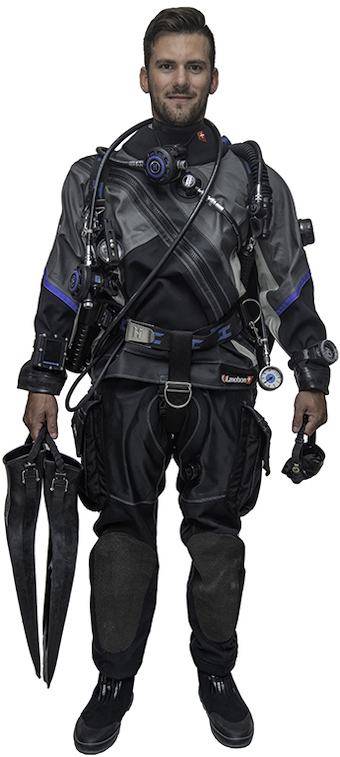Adopting DIR Principles in Recreational Diving
The Doing It Right (DIR) philosophy is widely associated with technical and cave diving, but many of its principles can be applied to recreational diving to enhance safety, efficiency, and enjoyment. While not every DIR practice may be viewed as necessary for recreational divers, adopting key elements of this system can make diving more streamlined, improve buddy communication, and increase overall situational awareness.
What is DIR?
DIR ("Doing It Right") is a philosophy and approach to diving that emphasizes standardization, team diving, and a streamlined, efficient gear configuration. Originally developed in the cave diving community, DIR principles are now widely applied in both recreational and technical diving.
The Evolution of DIR
DIR has been a controversial topic within the diving community due to its historical rigidity and strong opinions from early adopters. In the 1990s, DIR was often seen as an elitist approach, with strict gear mandates and vocal proponents who dismissed alternative diving philosophies. This led to heated debates between divers who valued standardization and those who prioritized personal preference.
Over time, DIR-based organizations have evolved, recognizing the need for flexibility. GUE, the most well-known DIR-based training agency, no longer emphasizes the DIR label and instead focuses on structured training and disciplined team diving. The GUE Fundamentals course ("Fundies") is widely respected for improving divers’ skills, regardless of agency background.
DIR is more than just a gear setup—it’s a mindset that prioritizes preparedness, teamwork, and continuous improvement. Whether you’re diving recreationally or exploring advanced environments, adopting DIR principles can enhance your diving experience and safety.
For those interested in formal DIR training, GUE Fundamentals is often the best starting point.
Key DIR Principles for Recreational Divers

1. Standardized Gear Configuration
One of the foundational aspects of DIR is a consistent gear setup that promotes familiarity, reduces failure points, and facilitates better buddy assistance.
Recreational divers can apply this by:
- Using a backplate and wing (BP/W) system instead of a traditional jacket BCD for better trim and buoyancy control.
"I used to own and dive a jacket BCD before switching to a BP/W setup. The difference in control and comfort was immediately noticeable. Your own experience may be different." - Keeping hose routing clean and streamlined to avoid entanglement hazards.
- Placing essential items like a cutting tool and SMB in consistent, easily accessible locations.
2. Streamlined and Balanced Equipment
- Carrying only the necessary equipment for the dive (e.g., avoiding dangling accessories or unnecessary extra gear).
- Ensuring proper weight distribution to achieve horizontal trim effortlessly.
- Using a Balanced Rig that allows for controlled ascents even if weight is dropped.
3. Emphasis on Buoyancy, Trim, and Propulsion Techniques
- Practicing neutral buoyancy at all times, not just during safety stops.
- Using efficient finning techniques like frog kicks instead of flutter kicks to reduce silting and conserve energy.
- Maintaining a horizontal trim position to improve control and reduce drag.
"During my GUE Fundamentals course, I realized just how much proper trim and buoyancy could change the entire diving experience. The ability to hover effortlessly and move efficiently was a game changer."
4. Team-Oriented Diving
- Sticking to a consistent buddy check system rather than treating it as a formality.
- Using Hand Signals and light communication clearly and efficiently.
5. Pre-Dive Planning and Gas Management
- Using GUE EDGE or a similar structured approach to planning a dive.
- Establishing a Minimum Gas Reserve based on actual gas consumption rather than arbitrary PSI limits.
- Calculating turn pressure using rock-bottom gas planning principles adapted for recreational diving.
"I began structured planning after learning about it during my Drysuit class with Richard Tessell. Understanding real gas consumption instead of just relying on 'get back to the boat with 500 PSI' changed the way I think about dive safety."
6. Situational Awareness and Risk Mitigation
- Continuously assessing the dive environment and being proactive about potential hazards.
- Recognizing when to call the dive if conditions, gas supply, or personal comfort require it.
- Being mindful of Human Factors and how stress, complacency, and task loading can impact decision-making.
Applying DIR Principles Without Going Fully DIR
While full DIR adherence requires specific training and a standardized approach, recreational divers can benefit from adopting its core principles without needing to change everything. The key takeaways are:
- Consistency and streamlining in gear and diving habits.
- Emphasis on buoyancy, trim, and efficient propulsion.
- A strong team-oriented mindset and clear communication.
- Better gas planning and risk management.
Recreational divers who integrate DIR elements into their diving will likely find themselves more confident, efficient, and prepared for a wider range of diving conditions. Whether diving in a local quarry or exploring a tropical reef, the principles of DIR can help make every dive safer and more enjoyable.